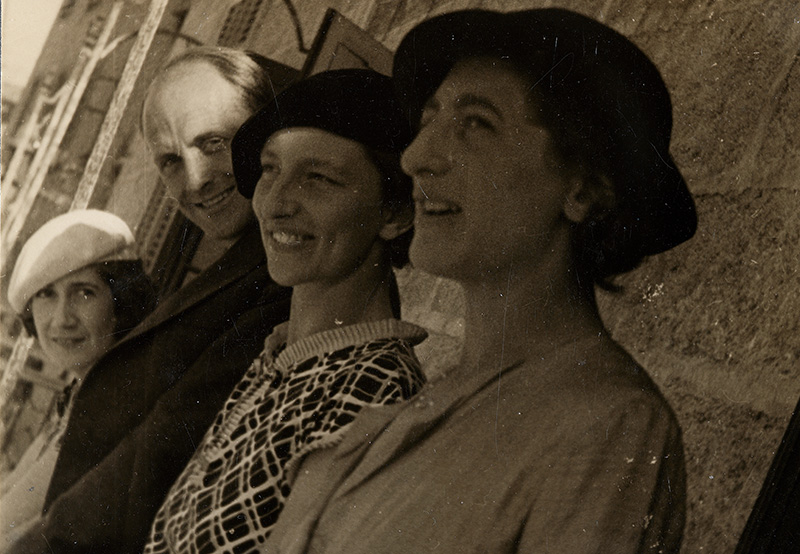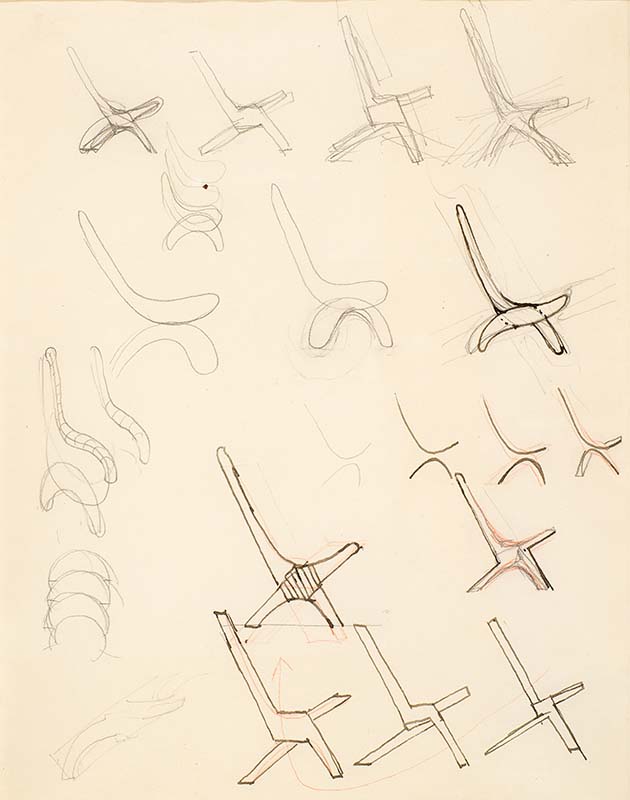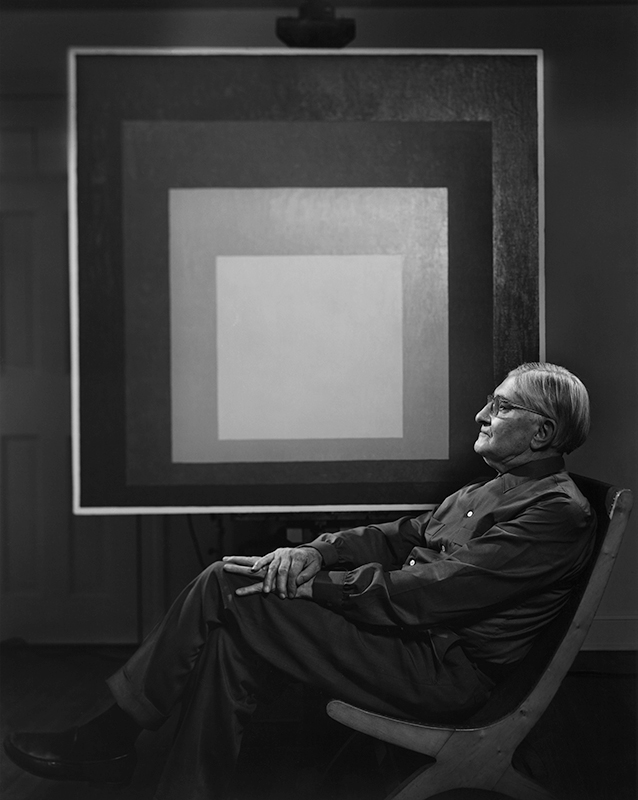Tracing a Friendship Through Design: Clara Porset and Josef Albers
by Christina L. De León
Clara Porset—a pioneering figure in 20th-century Latin American design history—has been at the center of my research for many years. The Cuban-born designer settled in Mexico City as a political exile in 1936 at the age of 41 and would become one of the country’s leading designers.
Porset’s most emblematic furniture design was her modern reinterpretation of the butaque.1 Designed for optimal comfort and repose, a butaque sits low to the ground, and consists of an inclined seat and back attached to a wooden frame to form a characteristic J-shaped chair. Porset’s numerous butaques were distinguished by a minimalist aesthetic as well as an acute attention to materials and craftsmanship (figure 1). Through her various iterations of this chair, I have come to understand Porset’s impact on mid-20th-century Modernism and her position within an influential network of artists, architects, designers, and intellectuals.
Before settling in Mexico, Porset established herself as a prominent furniture and interior designer in her native Cuba, receiving commissions for private homes, schools, hospitals, and clubs. In 1933, she founded the Architects Institute of Cuba and became the director of the Technical School for Women-Rosalia Abreu Foundation. Although her wealthy upbringing afforded her with an impressive education in the United States and Europe, she regretted never studying at the Bauhaus. Porset wrote Walter Gropius to inquire about enrollment, but the rise of Germany’s National Socialist Party and its increasing pressure on the school prohibited her from attending. However, Gropius recommended she contact the German-born artist and educator Josef Albers at the newly established experimental arts school, Black Mountain College in Asheville, NC.
In September 1934, Porset traveled to the school, where she took courses with Albers on the fundamentals of composition and design. I have been keen to explore Porset’s friendship with Albers, since the two remained in contact over the course of many years (figure 2). Moreover, Albers was inspired by Porset’s butaques and designed his own version for Black Mountain’s dormitories (figure 3). With the generous support of a Decorative Arts Trust Research Grant, I spent several days at the Josef and Anni Albers Foundation in Bethany, CT. The couple’s art collection, library, and archives are housed on a sprawling and idyllic property, and the Foundation provided the perfect atmosphere for combing through Josef Albers’ papers.
Black Mountain was an important and influential experience for Porset. Of her time at the school, she wrote: “Seeing is better than reading, so I went to Black Mountain College, a place lost in the mountains of North Carolina, beautiful if there is anything beautiful, where Albers now gives his wonderful teaching with the prodigality of one who is the owner of an inexhaustible treasure.”2 Later that year Porset invited him to give three lectures at the Lyceum Club in Cuba. Founded as a women’s social club, the Lyceum flourished as a center of arts and culture, where intellectuals and artists gave talks, conferences, and exhibited their work.
Accompanied by his wife Anni as well as Theodore and Barbara Dreier, the group drove from North Carolina to Miami and then arrived in Cuba by ferry. Albers gave the series of talks at the Lyceum, which were all delivered in German and translated to Spanish by Porset. He was well received in Cuba, and his lectures were written about favorably in the local press. The Foundation also holds the many photographs Albers took in Cuba, and I was fascinated to see the trip captured through his eyes.
This three-week visit to Cuba would be the first of many trips Josef and Anni Albers would take to Latin America in the decades to come. In particular, the couple would form a deep connection to Mexico, which they visited over 13 times. Once Porset settled there, she and her husband, the Mexican artist Xavier Guerrero, became instrumental in connecting the Alberses to their creative circle of friends. Countless photographs of these trips exist, but I was surprised to find no correspondence between Josef or Anni Albers and Porset survive. Their relationship is mostly captured through photographic clues and sparse documentation. Nevertheless, one can interpret Albers’s design for a butaque as tangible evidence of a shared admiration. Two surviving c. 1940 sketches show him working through the chair’s design that ultimately led to two versions for Black Mountain College, now identified as Mexican Chair Type A and B. Both examples directly share affinities with those designed by Porset. Historians believe that Albers traced the outline of her chair and took notes on its construction, although this material has been lost to time.
Mary Gregory, head of the woodworking shop at Black Mountain, produced numerous butaques designed by Albers for the campus, many of which survive today. In fact, the Alberses continued to live with a few of these chairs until their passing. I was particularly drawn to two images that show Josef and Anni sitting on butaques (figure 4). The butaque was an enduring symbol of their time at Black Mountain and their connection to Mexico, yet also a fond reminder of their friend Clara Porset.
- This chair form is referred to by an array of names, however for the purposes of this text I use butaque, which is the term used in Mexico.
- “Cultural Life,” AHORA, 1935.
Christina L. De León is a PhD Candidate at Bard Graduate Center and an associate curator at Cooper Hewitt, Smithsonian Design Museum.
A print version of this article was published in The Magazine of the Decorative Arts Trust, one of our most popular member benefits. Join today!




